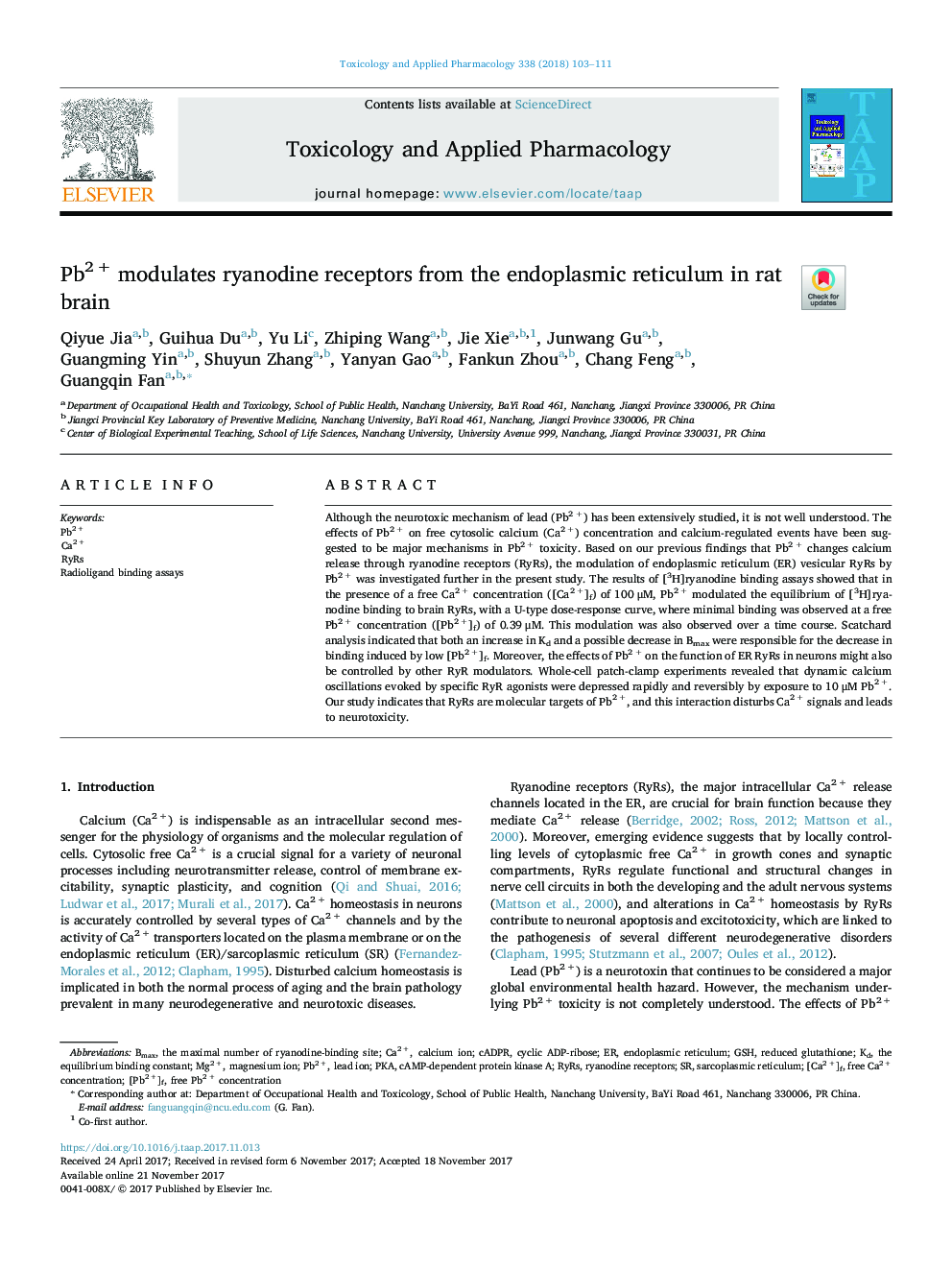| Article ID | Journal | Published Year | Pages | File Type |
|---|---|---|---|---|
| 8538990 | Toxicology and Applied Pharmacology | 2018 | 9 Pages |
Abstract
Although the neurotoxic mechanism of lead (Pb2 +) has been extensively studied, it is not well understood. The effects of Pb2 + on free cytosolic calcium (Ca2 +) concentration and calcium-regulated events have been suggested to be major mechanisms in Pb2 + toxicity. Based on our previous findings that Pb2 + changes calcium release through ryanodine receptors (RyRs), the modulation of endoplasmic reticulum (ER) vesicular RyRs by Pb2 + was investigated further in the present study. The results of [3H]ryanodine binding assays showed that in the presence of a free Ca2 + concentration ([Ca2 +]f) of 100 μM, Pb2 + modulated the equilibrium of [3H]ryanodine binding to brain RyRs, with a U-type dose-response curve, where minimal binding was observed at a free Pb2 + concentration ([Pb2 +]f) of 0.39 μM. This modulation was also observed over a time course. Scatchard analysis indicated that both an increase in Kd and a possible decrease in Bmax were responsible for the decrease in binding induced by low [Pb2 +]f. Moreover, the effects of Pb2 + on the function of ER RyRs in neurons might also be controlled by other RyR modulators. Whole-cell patch-clamp experiments revealed that dynamic calcium oscillations evoked by specific RyR agonists were depressed rapidly and reversibly by exposure to 10 μM Pb2 +. Our study indicates that RyRs are molecular targets of Pb2 +, and this interaction disturbs Ca2 + signals and leads to neurotoxicity.
Keywords
Related Topics
Life Sciences
Environmental Science
Health, Toxicology and Mutagenesis
Authors
Qiyue Jia, Guihua Du, Yu Li, Zhiping Wang, Jie Xie, Junwang Gu, Guangming Yin, Shuyun Zhang, Yanyan Gao, Fankun Zhou, Chang Feng, Guangqin Fan,
